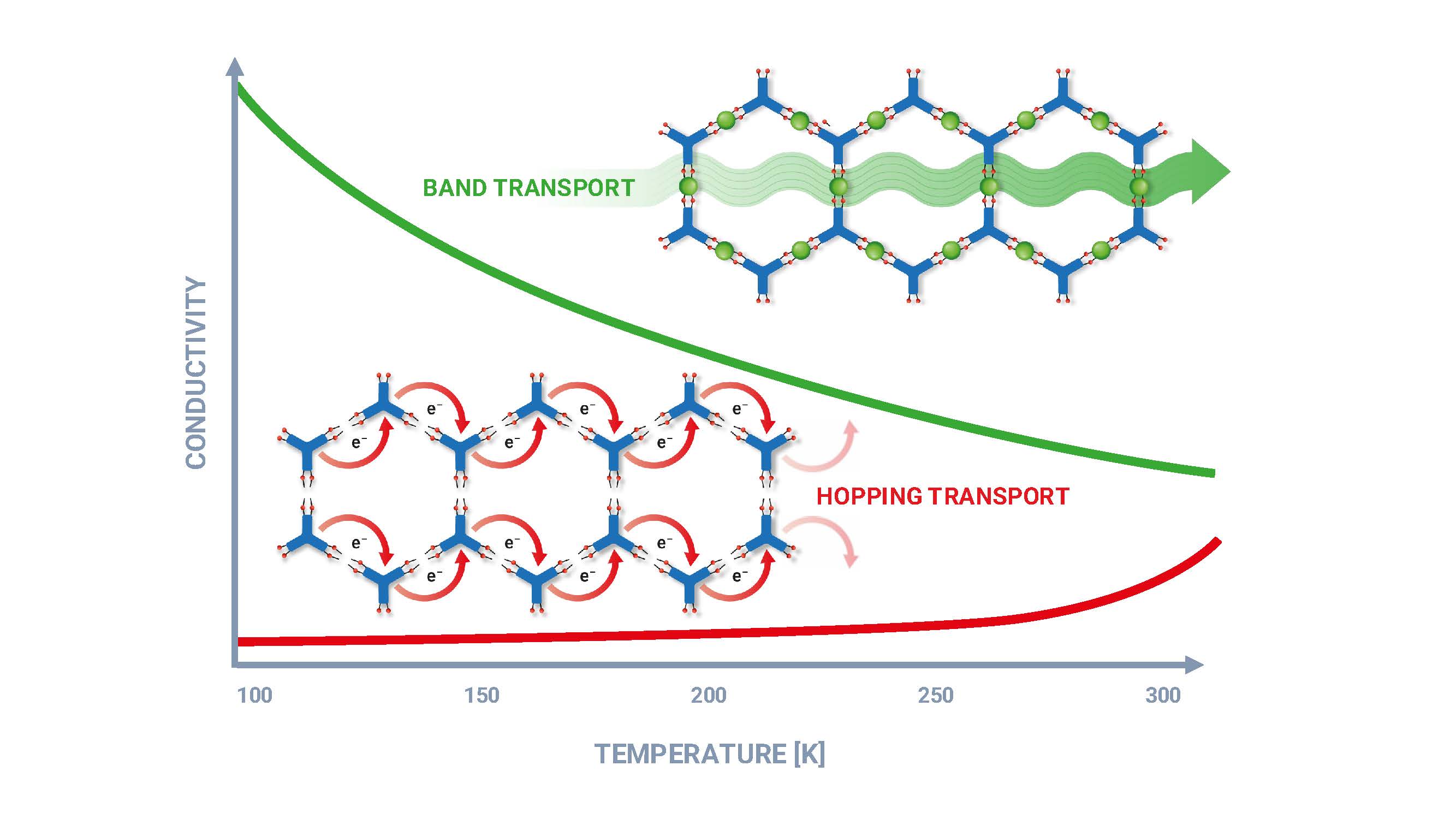
Metal-organic frameworks (MOFs) are characterized by high porosity and structural versatility. They have enormous potential, for example for applications in electronics. However, their low electrical conductivity has so far greatly restricted their adoption. Using AI and robot-assisted synthesis in a self-driving laboratory, researchers from Karlsruhe Institute of Technology (KIT), together with colleagues in Germany and Brazil, have now succeeded in producing an MOF thin film that conducts electricity like metals. This opens up new possibilities in electronics and energy storage - from sensors and quantum materials to functional materials. The team reports in the Materials Horizons journal. ( DOI: 10.1039/d5mh00813a )
MOFs (metal-organic frameworks) consist of metallic clusters and organic linkers. They can be used for catalysis, material separation, and gas storage, among other things. Researchers at the Institute of Functional Interfaces (IFG) and the Institute of Nanotechnology (INT) at KIT, as well as the University of Göttingen, the Free University of Berlin, and the São Paulo State University in Brazil have now achieved a major breakthrough: For the first time, they have produced an MOF in the form of a thin film that exhibits metallic conductivity.
New Manufacturing Process Minimizes Defects in MOFs
While metallic conductivity in MOFs has been predicted theoretically, it has so far only been put into practice in exceptional cases - and never before in thin-film form required for technical applications, which involves applying thin films of the MOF to a substrate. "The low electrical conductivity is caused by defects such as boundaries between crystalline domains," explains Professor Christof Wöll, head of IFG at KIT. "Such structural defects hinder electron transport. Our new manufacturing process has helped us to significantly reduce the density of these defects."
The international research team used AI- and robot-assisted synthesis in a self-driving laboratory to optimize thin films of the Cu3(HHTP)2 MOF material. This approach enables precise control over crystallinity and domain size. In Cu3(HHTP)2 thin films, conductivities of more than 200 Siemens per meter were achieved at room temperature - and even higher ones at low temperatures of minus 173.15 degrees Celsius. This is a hallmark of metallic behavior, paving the way for the use of MOF thin films in electronic components.

Optimized MOF Enables Exploration of Unusual Transport Phenomena
Theoretical analysis also reveals that the Cu3(HHTP) 2 MOF material features Dirac cones - special electronic states such as those found in graphene. "This opens up completely new possibilities for the experimental exploration of unusual transport phenomena such as spin liquids, in which the quantum spins remain disordered even at low temperatures, or Klein tunneling, in other words, tunneling through barriers by very fast particles," says Wöll.
With their study, the researchers are not only presenting a new method for producing conductive MOF films for integration into electronic components, but are making MOFs a new option in many new fields of application. "The combination of automated synthesis, predictive material characterization, and theoretical modeling opens up new perspectives for the use of MOFs in future electronics - from sensors and quantum materials to tailor-made functional materials with specifically adjustable electronic properties," says Wöll. (or)
Original Publication (Open Access)
Chatrawee Scheiger, Jonas F. Pöhls, Mersad Mostaghimi, Lena Pilz, Mariana Kozlowska, Yidong Liu, Lars Heinke, Carlos Cesar Bof Bufon, R. Thomas Weitz, Wolfgang Wenzel and Christof Wöll: Dirac-cone induced metallic conductivity in Cu3(HHTP)2: high-quality MOF thin films fabricated via ML-driven robotic synthesis. Materials Horizons, 2025.
More about the KIT Center Materials in Technical and Life Sciences (MaTeLiS)
Being "The Research University in the Helmholtz Association", KIT creates and imparts knowledge for the society and the environment. It is the objective to make significant contributions to the global challenges in the fields of energy, mobility, and information. For this, about 10,000 employees cooperate in a broad range of disciplines in natural sciences, engineering sciences, economics, and the humanities and social sciences. KIT prepares its 22,800 students for responsible tasks in society, industry, and science by offering research-based study programs. Innovation efforts at KIT build a bridge between important scientific findings and their application for the benefit of society, economic prosperity, and the preservation of our natural basis of life. KIT is one of the German universities of excellence.






